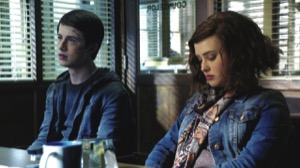
It is likely that if you are reading this, you were either bullied in high school for not conforming to conservative gender roles or you consciously conformed to such roles so that you wouldn’t be bullied in high school. You may have gone the extra mile and bullied other kids to show how much you were not the kind of kid who should be bullied. Or you may have been bullied so severely that you contemplated or even attempted suicide.
It’s not just queer kids, out or in the closet, obviously. It can be just about anyone. Being bullied is strongly correlated with suicidality, and perhaps counterintuitively, as is being a bully. After falling for many years, suicide rates have been rising for teenagers overall, slightly for boys but dramatically for teenage girls. Over the last 15 years, for girls 10-14, it’s 300 percent higher, and for girls 15-24, it’s 50 percent higher.
It’s all quite sad and, for those of us who suffered in high school (and later), it’s upsetting. So why would we want to binge on a Netflix series about bullying and suicide? 13 Reasons Why, based on the bestselling young adult novel by Jay Asher and created by gay Pulitzer Prize-winning playwright Brian Yorkey, is certainly a drama about a girl who is bullied and then kills herself. It is meant to be an instructional and cautionary tale. It is as earnest as Heathers was satirical, but it is much more than an overlong version of the lame documentary Bully. It’s sad and fascinating and disturbing and enraging and occasionally funny, romantic and cathartic. It has a fantastic soundtrack, and it’s beautifully shot. It’s also flawed. The show has been the subject of extensive social media chatter for the last two weeks for all of those reasons, with even its haters watching the whole thing. I did so in 24 hours, even as I knew how much it manipulated me more than a narrative is supposed to.
The plot is structured by a smart gimmick. Beautiful teenage Hannah Baker (Katherine Langford) has committed suicide and before she did so, she recorded her 13 reasons across seven and half cassette tapes. Each reason is focused on a different person who did something, something either horrific or just petty, leading her toward the decision. Each person is given the tapes, told to listen in order, and then pass them along to the next. Clay Jensen (Dylan Minnette) is the 11th side, and the show focuses on his experience listening to them.
A sweet, “good kid” (as his parents say more than once), he keeps almost all of his emotions sublimated, including his love for Hannah. He speaks to no one about the tapes except the other people on them. Some of them are his friends, but most of the kids are their school’s “popular” kids, and they do dreadful things to each other to remain popular, get ahead or prevent everyone from knowing their secret shames.
Hannah gets it the worse, but it’s not clear how reliable she is a narrator and not clear why some of the things that she claims to have set her on a course for suicide wouldn’t do so for anyone but someone who is already suffering from a mental illness. Research shows that 90 percent of people who commit suicide have an underlying mental health disorder, but the story allows Hannah to blame her suicide entirely on other people. It’s a bit much: One deserves to go to jail, and a few are dreadful people, but at least eight of the 13 were simply careless, at worst petty.
I guess some of why I kept watching was that I wanted to see who was really at fault. The narrative is propelled by numerous mysteries, from what Clay did to get on the tapes to who is on them to what was Hannah’s final straw. It’s also propelled by the unbelievable claim that Clay is too upset to listen to the tapes all in one sitting – unlike everyone else, who did it in one sitting – which gives him the opportunity to make the rest of the kids nervous, enraged and dangerously suspicious and the one big reason there are 13 full episodes of the show.
Despite this ridiculousness and despite how dreadful most of the kids are and how devoid of consciences at least three of them are, the show is engrossing and enveloping in a way that only the best teen-focused dramas are. In movies like The Spectacular Now, The Fault in Our Stars, or Thirteen, the emotional realism of adolescence is depicted by exceptional and artful acting, writing and directing. The latter includes such luminaries as Oscar-winners Tom McCarthy and Jessica Yu and indie legend Gregg Araki. Minnette is crushingly good in his grief and his love and Langford is luminous and fragile. Alisha Boe is heartbreaking and enraging as Hannah’s conflicted and damaged frenemy Jessica (Tape 1, Side A), while Brandon Flynn portrays Justin (Tape 1, Side B) with a pathetic and dangerous masculinity with a rarely allowed sensitivity. What 13 Reason Why does best is to show how complicated adolescent emotions are, how easily teenagers damage and are damaged, how easy technology amplifies bullies and bullying, and how hard it is to escape unscathed.
MOVIE REVIEW
13 Reasons Why
Created by Brian Yorkey
Based on the novel by Jay Asher
Directed by Gregg Araki, Tom McCarthy, Jessica Yu and others
Starring Dylan Minnette, Katherine Langford and Alisha Boe
Whole series streaming on Netflix











